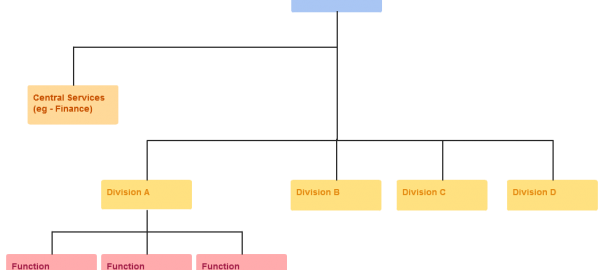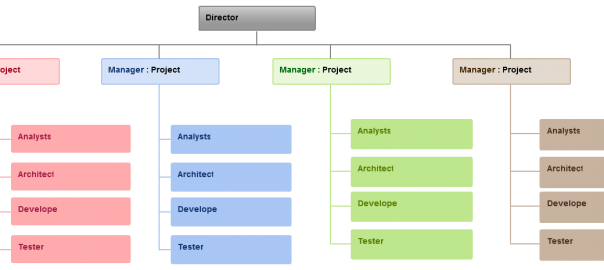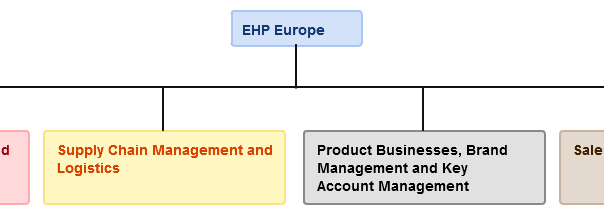Here we go again – more on org charts! I did walk you through some of the different organization structures in our previous post, if you haven’t seen the post, go read it! And now, I’ll take you through 3 more organization structural types.
The holding company structure
You probably know what a holding company is? However, if you begin to wonder what this is, here’s a little description. Holding company is an investment company consisting of shareholdings in a variety of separate business operations. These business operations may operate independently although they are a part of the parent company.
A holding company structure is based on the idea that the constituent businesses will operate their product strategy to their best potential if left alone, particularly as business environments become more turbulent. This structure may claim benefits, such as the spreading of risk across many business ventures and the ease of divestment of individual companies. Perhaps the greatest weaknesses of this structure are the lack of internal strategic cohesion and duplication of effort between businesses.
The Matrix Structure
This is a combination of structures which could take the form of product and geographical divisions or functional and divisional structures operating in tandem. These may be generally adopted by your managers because there is more than one factor around which knowledge needs to be built whilst ensuring that these separate areas of knowledge can be integrated.
For example, a global company may prefer geographically defined divisions as the operating units for local marketing (because of the specialist local knowledge of customers). But at the same time they may still want global product divisions responsible for the worldwide co-ordination of product development, manufacturing and distribution to these geographical divisions (because of the specialist knowledge of these issues).
Because Matrix structure replaces formal lines of authority with (cross-matrix) relationships, this often brings problems. In particular, it will typically take longer for you to reach decisions since they may result from bargaining rather than imposition. There may be also a good deal of conflict because of the lack of clarity of role definition and responsibility. Perhaps the key ingredient in a successful matrix structure can be achieved by encouraging your senior managers to sustain collaborative relationships (across the matrix) and coping with the messiness and ambiguity which that can bring.
Team-based Structure
This structural type is aimed at using employees from various departments who form a temporary team in order to solve a problem. For example, if you’re running an Information Systems company, you might have development teams, product teams and application teams who are probably responsible for: new product development, service and support of standard products, and customizing products to particular customers (or customer groups) respectively. Now, since each of these teams will have a mix of specialists, you’ll be able to see the issues holistically.
Team-based structures allows every employee in your organization to feel important, feel like they have a voice so they are more motivated to accomplish their tasks. However, this structure has its problems. Team members can tend to be partial to their needs, resulting in more disagreement among the team. This can result in a lot of time wasted. Therefore, this structure may not be the answer for every business or decision-making requirement.
I will not overload you with too much information. I’ll save the rest for another post! So hope to see you soon with the a little more on organization structures. And, as always share your feedback and ideas. We’re listening!





[…] Comments I really hope you enjoyed the glut of posts we published, which covered UML diagrams and Org Charts, recently. You can bet we got more knowledge-based posts coming your way this week. But we just had […]